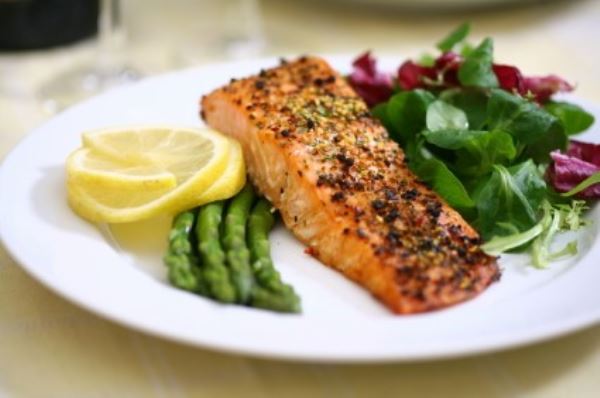Eating Out is No Longer a ‘Treat’
 Remember when going out for lunch or dinner used to be this amazing, exciting treat that you looked forward to. It was an uncommon indulgence that we saved for special occasions.
Remember when going out for lunch or dinner used to be this amazing, exciting treat that you looked forward to. It was an uncommon indulgence that we saved for special occasions.
But if you look at today’s society, it has become common ground to just about eat out nearly every day. About 32% of our calories are away from the home, and if you don’t have the will power or the know-how, it can add up to extra pounds!
So to lose or maintain your weight and stay healthy, you have to be nutritionally savvy in order not to fall into a spiraling caloric overload. Here are a few ‘survival guide’ tips to help you stay on track.
1. Avoid Empty Calories
It’s easy to order “just one” drink, or have “just a small” piece of bread, but it can go sideways on you real fast and those “just one” of a few things really adds up to extra calories fast.
You can make a lot of headway by avoiding those empty calories. This includes all that free bread or tortilla chips, and high calorie drinks. Ask your server to take away the bread/chips and opt for beverages that don’t contain calories (water, sparkling water, diet soda, tea, etc).
2. Portions
One of the most important things to remember is that the portions you are served not necessarily the portions that you should be eating. It is important to remember that chefs aren’t trained in nutrition. This is illustrated by the fact that 76% of chefs thought the portions of pasta and steak they were serving were regular but they were actually 2-4 times what would be considered a normal serving size.
Know what portion is appropriate for you. Use simple guides like:
• Protein the size of 1 palm and just as thick for women, 2 of your palm sizes for men.
• Rice, potato or pasta (or any dense carb) that fits in the palm of your cupped hand with a lid on it.
• Oil or dressing the size of a poker chip.
• Cheese the size of your thumb
• Vegetables the size of a closed fist, or salad the size of 2 full handfuls.
3. Do Nutrition Reconnaissance Whenever Possible
The calorie content of meals is very often available on a restaurant’s website but it is not always easily accessible onsite. Online, some companies have nutrition calculators where you can create your ideal meal and see what the calorie, protein, carbohydrate, and fat breakdown would be.
Use these tools whenever possible to empower your ordering decisions. If this is not an option at the restaurant you’re planning to visit, remember to eat lean choices of protein, skip the butter and sour cream on your potato, and ask for vegetables steamed or raw to avoid the excess fats they use in cooking.
4. Eat Lots of Vegetables!
Vegetables are your best friend when dining out. They are full of micronutrients, water and fiber and they help satiate your appetite so you will feel fuller. Dr. Barbara Rolls’ research on eating behavior is pretty clear and consistent, the more vegetables you eat (preferably green leafy ones) the less calories you are going to eat. Pile on the vegetables.
Start your meal off with a salad. Hold the bacon, cheese, eggs, avocado, walnuts, and salad dressing. A simple ‘house’ salad with lots of greens and a little bit of oil and vinegar for dressing will cut your calories by a boat load! Dr. Rolls’ research shows that having a salad before a meal can decrease the total amount of calories that you eat by 10-12%. If you aren’t big on salads, her research shows similar results with broth based vegetable soups.
Here’s a great tip: Ask for your oil/vinegar dressing on the side, dip your fork tines in the dressing and then jab a fork load of salad on your fork. Eating this way will limit the amount of dressing you actually eat, help keep your fats in check and teach you to enjoy your food for its natural flavor.
5. Decode the Menu
How a meal is described on a menu can provide you with a lot of information about the calorie content of that meal.
Avoid Foods described as:
- Scalloped
- Parmesan
- Fried
- Bisque
- Breaded
- Crisp
- Au Gratin
- Battered
- Béarnaise
Meals described in this fashion are going to be higher in calories and prepared using more fat.
Pick Foods described as:
- Steamed
- Poached
- Grilled
- Broiled
- Au Jus
- Baked
- Braised
- Lean
Meals described in this fashion are going to be lower in calories. The amount of fat used in these preparation techniques is greatly reduced.
Yours in health!


